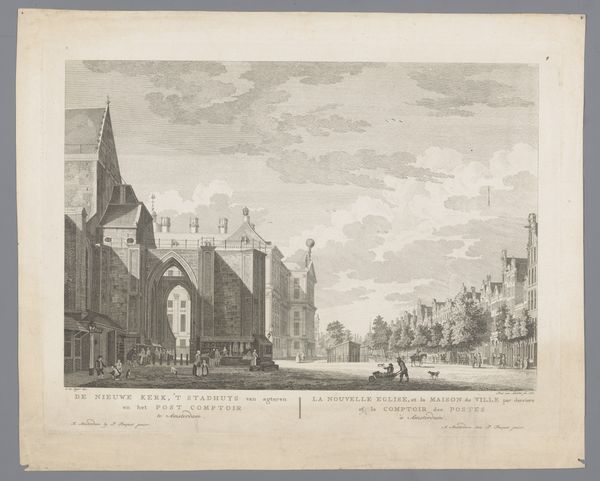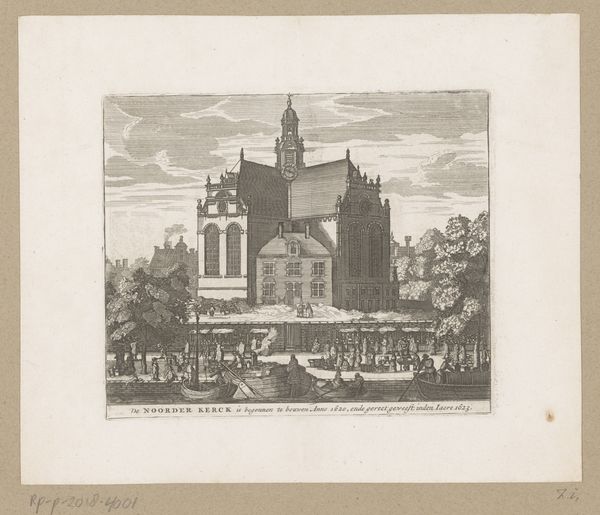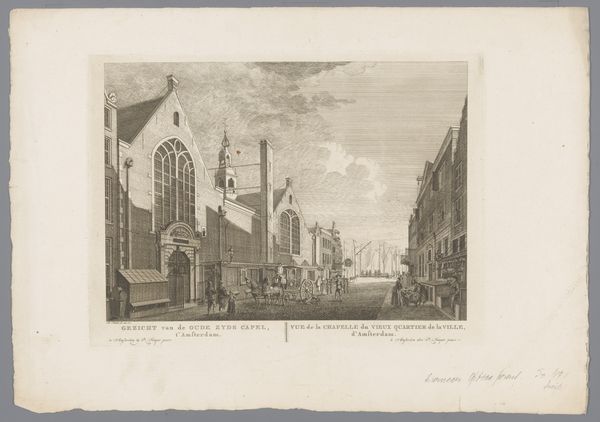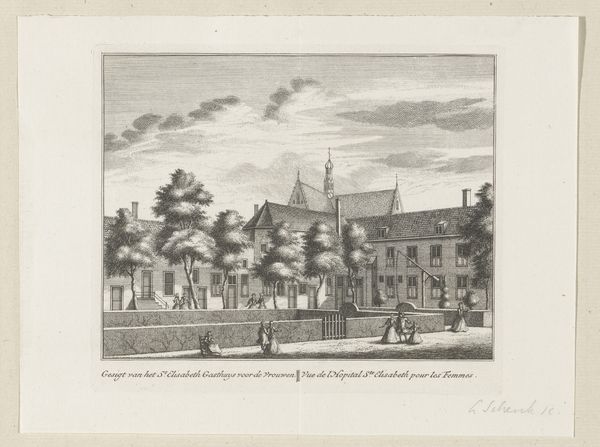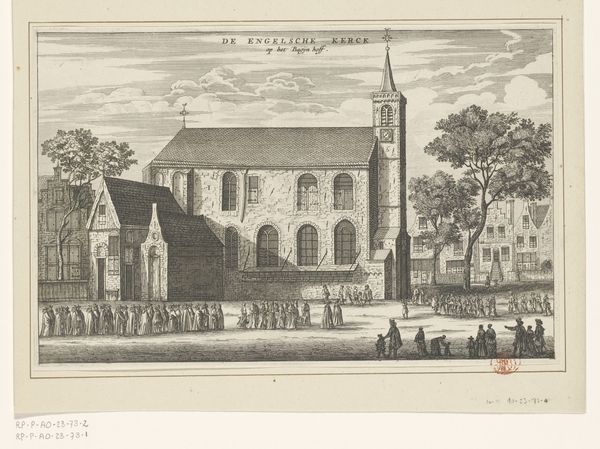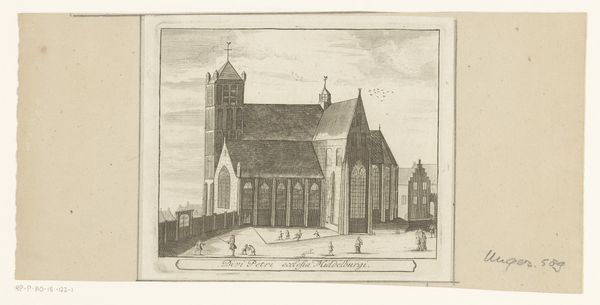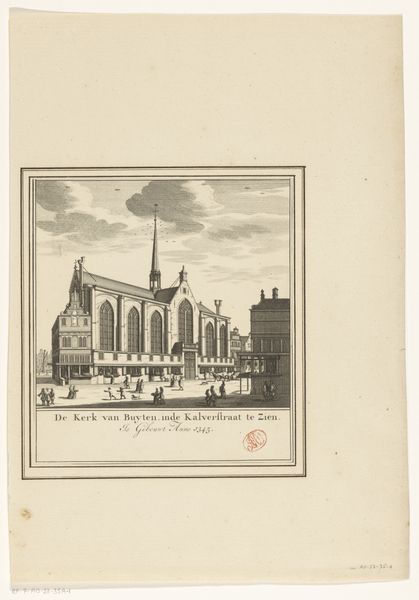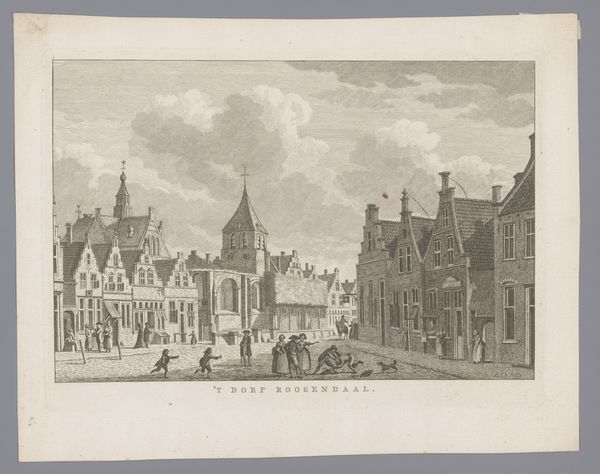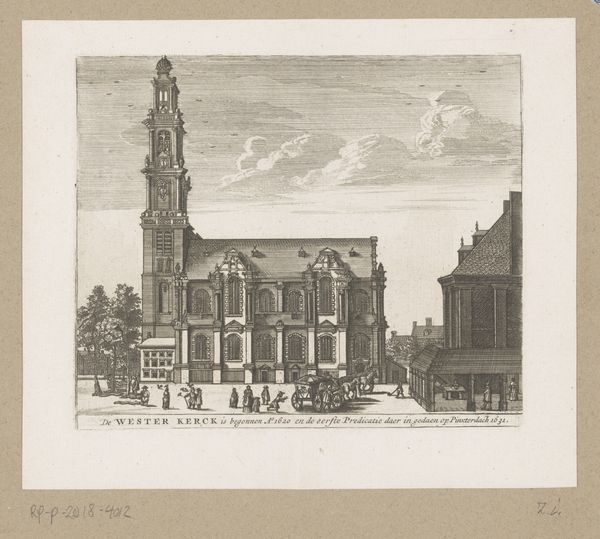
Dimensions: height 175 mm, width 202 mm
Copyright: Rijks Museum: Open Domain
Editor: This is a print from 1772 called "Gezicht op de Heilige Stede (Nieuwezijds Kapel) te Amsterdam," or "View of the Holy Place (Nieuwezijds Chapel) in Amsterdam." It’s an engraving on paper, so the lines are very crisp. It gives the entire cityscape a very precise feel. How do you read the visual elements of this piece? Curator: Formally speaking, observe how the strong verticality, established by the church spire and elongated windows, is countered by the horizontal emphasis of the extended façade and the ground level activity. The architectural massing itself presents a study in contrasting volumes. Editor: Could you say more about the visual weight of this print? Curator: Consider the density of lines used to articulate form. Heavily engraved areas define architectural structure and ground the scene. Sparsely rendered regions of sky and open space, particularly above and behind the main structure, lighten the overall visual field. What structural contrasts emerge in your analysis? Editor: I'm seeing the stark lines of the buildings juxtaposed with the soft curves of the clouds. The printmaker created this tension by controlling the density and direction of the lines, correct? Curator: Precisely. Line is not merely descriptive, it's constructive. The artist modulates our experience of depth and surface through variations in its application. Furthermore, how does the perspective, not perfectly linear, affect your spatial comprehension? Editor: That's fascinating! I hadn't considered how much the subtle choices in perspective guide my eye. Thank you! Curator: It demonstrates how an ostensibly objective cityscape is mediated through formal manipulations of space, line and perspective, inviting viewers to engage not just with subject but also the structuring artistic intelligence behind it.
Comments
No comments
Be the first to comment and join the conversation on the ultimate creative platform.


